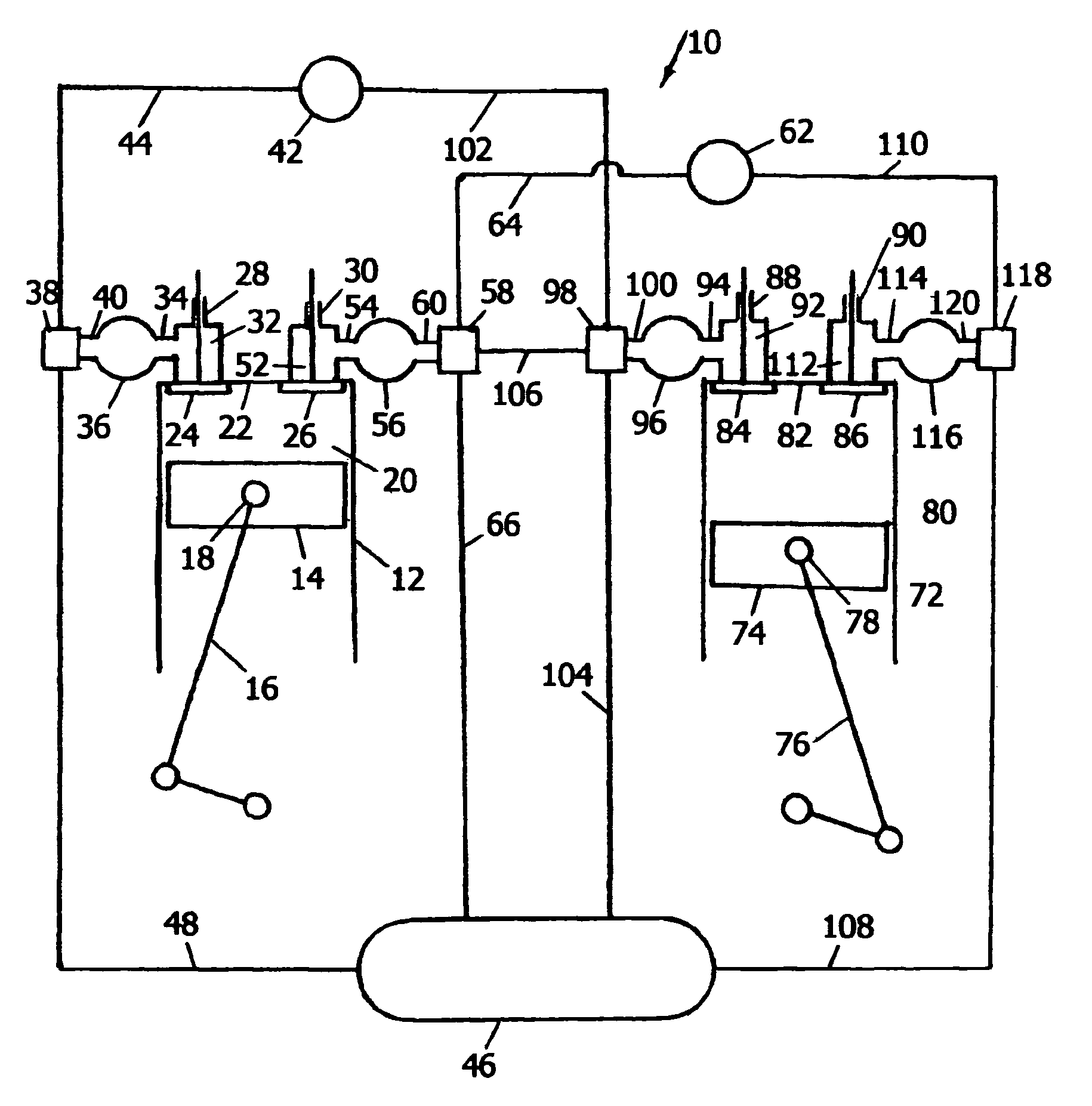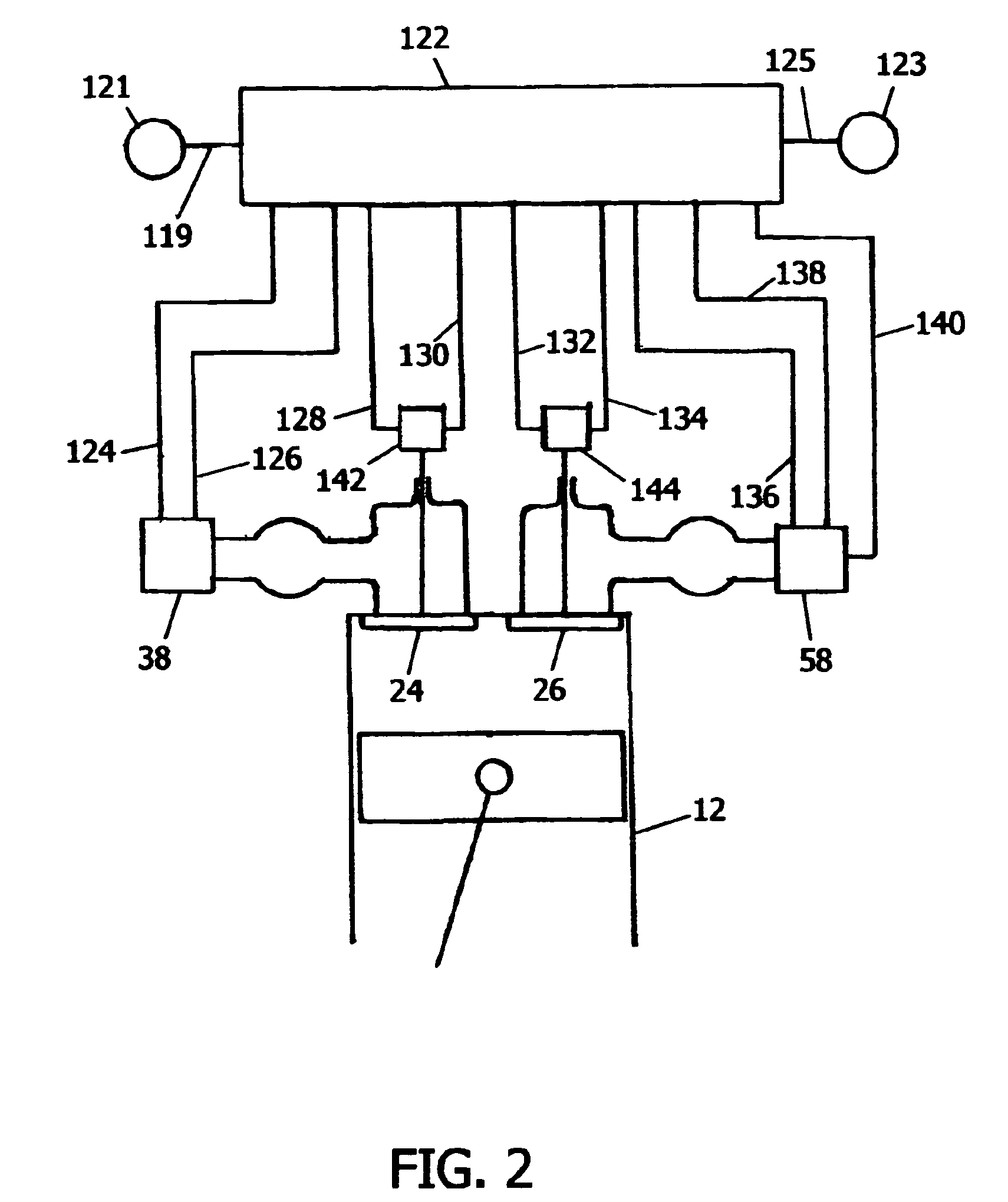Operating a vehicle with high fuel efficiency
a technology of high fuel efficiency and vehicle, applied in the field of vehicle systems, can solve the problems of virtually no improvement in fuel economy, limited advantage of hybrid operation, and inability to operate with hybrid systems, so as to improve fuel consumption and fuel consumption of vehicles during driving, reduce fuel consumption, and save fuel
- Summary
- Abstract
- Description
- Claims
- Application Information
AI Technical Summary
Benefits of technology
Problems solved by technology
Method used
Image
Examples
Embodiment Construction
FIGS. 1 to 5A and 5B
[0102]A preferred embodiment of the present invention is illustrated in FIGS. 1 to 5A and 5B. FIG. 1 is a schematic, cross-sectional side-view of two engine cylinders and their gas-flow connections to outside atmosphere, to compressed-air reservoir, and to each other. An engine 10 has at least two cylinders, including at least one primary cylinder 12 and at least one secondary cylinder 72. The design of the primary and secondary cylinders is identical, but they may perform different functions, depending on the mode of the engine operation.
[0103]Primary cylinder 12 contains a piston 14 that is mounted upon a connecting rod 16 by a wrist pin 18 and can reciprocate in cylinder 12, thus varying the volume of a cylinder chamber 20 enclosed between piston 14 and a cylinder head 22 attached to the top of cylinder 12. There are two types of normally-closed valves in cylinder 12, a first valve 24 and a second valve 26. Valves 24 and 26 are installed in cylinder head 22 an...
PUM
 Login to View More
Login to View More Abstract
Description
Claims
Application Information
 Login to View More
Login to View More - R&D
- Intellectual Property
- Life Sciences
- Materials
- Tech Scout
- Unparalleled Data Quality
- Higher Quality Content
- 60% Fewer Hallucinations
Browse by: Latest US Patents, China's latest patents, Technical Efficacy Thesaurus, Application Domain, Technology Topic, Popular Technical Reports.
© 2025 PatSnap. All rights reserved.Legal|Privacy policy|Modern Slavery Act Transparency Statement|Sitemap|About US| Contact US: help@patsnap.com



